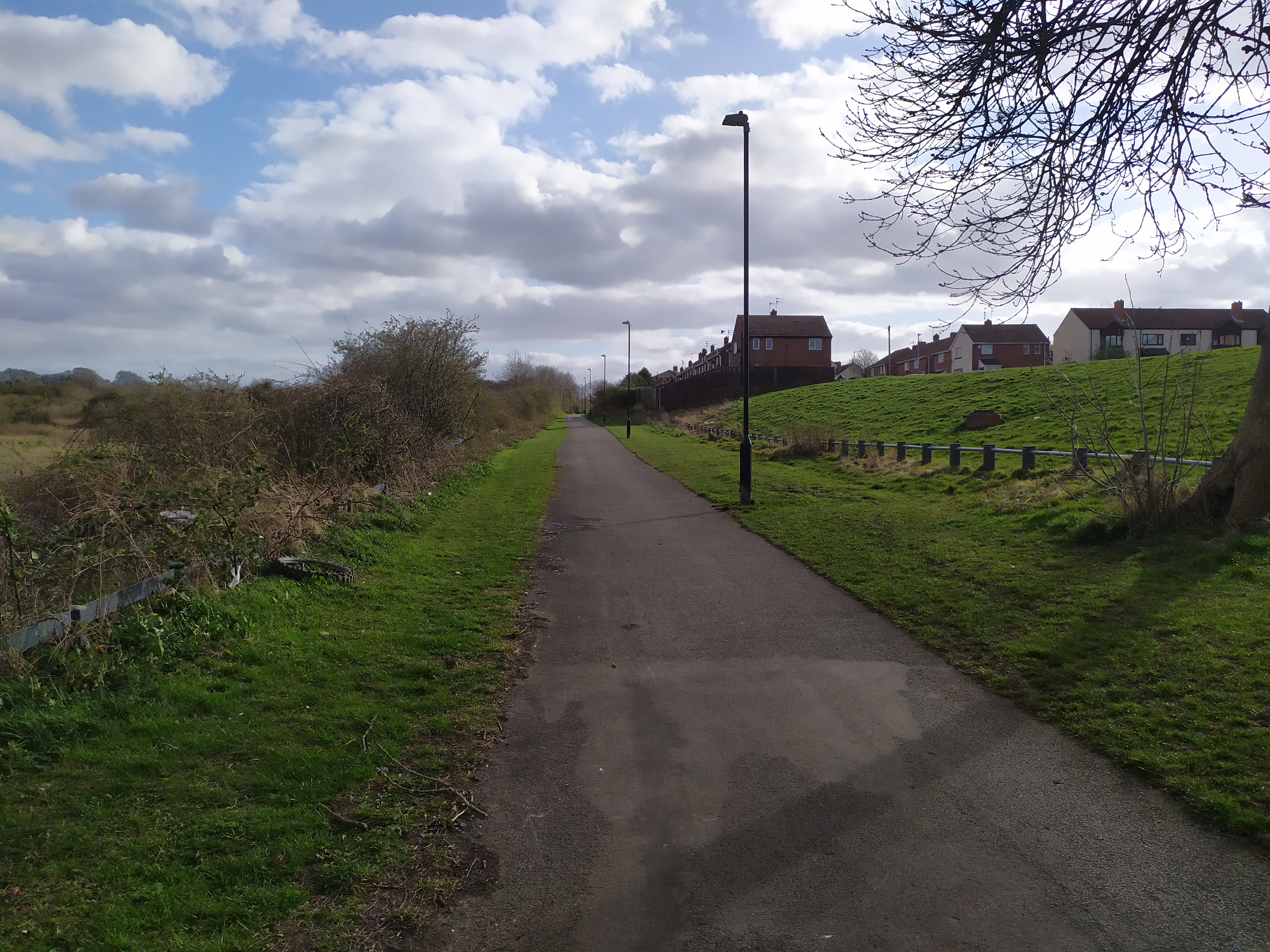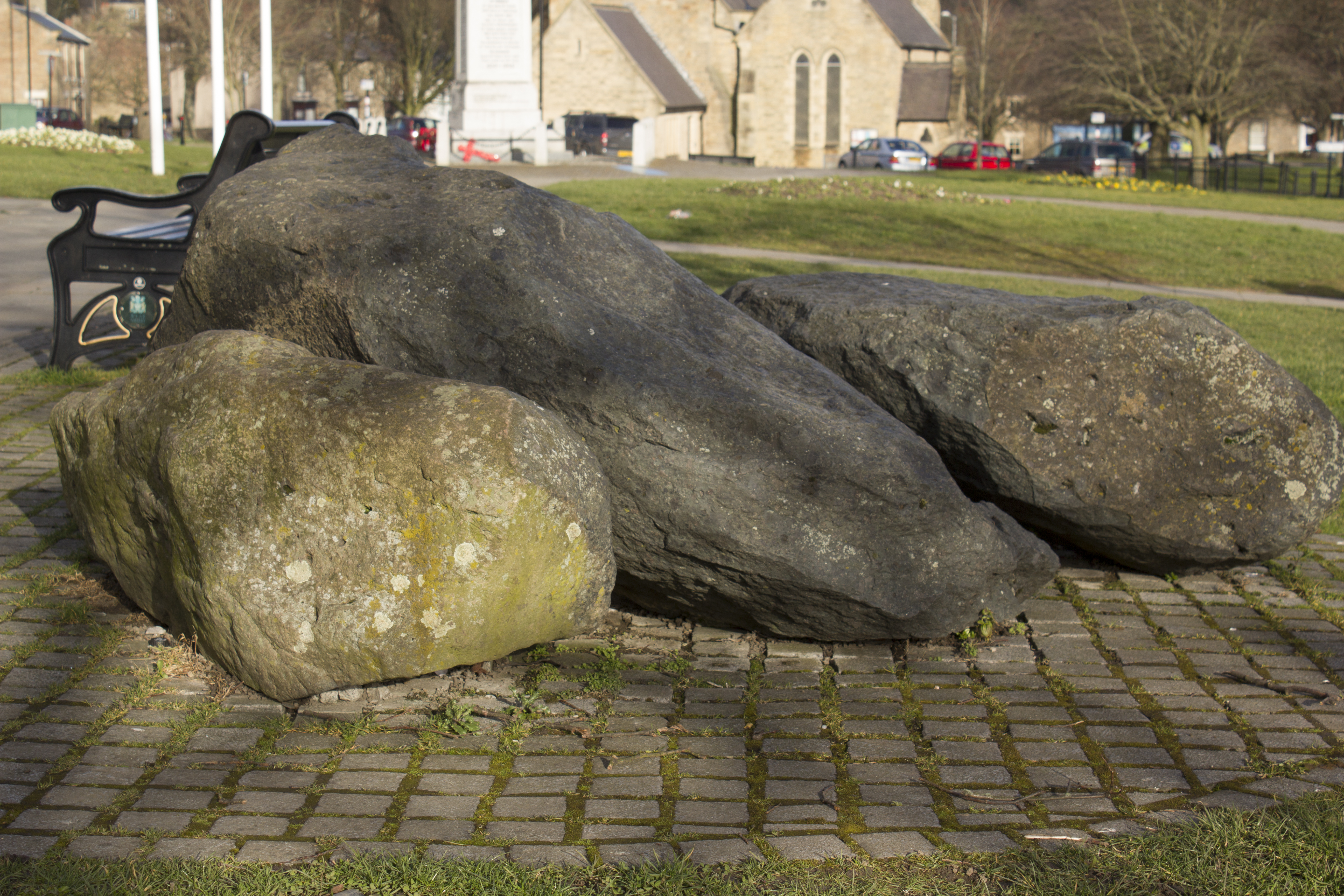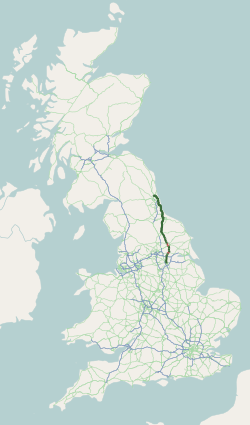|
A690
The A690 is a road in County Durham running from Sunderland in the east through Durham to Crook. Route Sunderland section Throughout the Sunderland section it is known as either ''Durham Road'' or ''New Durham Road'', and is one of the major routes in and out of the city. A single carriageway section runs from the city centre to a large roundabout at the Barnes. The road then climbs a steep hill toward High Barnes, alongside the Bede site of the Sunderland College before becoming dual carriageway. Beyond a set of traffic lights at the ''Prospect Hotel'', the road remains dual carriageway, but the inside lane is a 'no car lane'. (In early 2009 the ''Prospect Hotel'' was demolished to make way for a new Lidl store.) The road then climbs another hill, becoming single carriageway, with the Farringdon estate to the east and the Thorney Close estate to the west. A down hill stretch leads into the East Herrington and then on toward the A19 fly-over. Just after the A19 intersection ... [...More Info...] [...Related Items...] OR: [Wikipedia] [Google] [Baidu] |
Sunderland, Tyne And Wear
Sunderland () is a port city in Tyne and Wear, England. It is the City of Sunderland's administrative centre and in the historic county of Durham. The city is from Newcastle-upon-Tyne and is on the River Wear's mouth to the North Sea. The river also flows through Durham roughly south-west of Sunderland City Centre. It is the only other city in the county and the second largest settlement in the North East after Newcastle upon Tyne. Locals from the city are sometimes known as Mackems. The term originated as recently as the early 1980s; its use and acceptance by residents, particularly among the older generations, is not universal. At one time, ships built on the Wear were called "Jamies", in contrast with those from the Tyne, which were known as "Geordies", although in the case of "Jamie" it is not known whether this was ever extended to people. There were three original settlements by the River's mouth which are part of the modern-day city: Monkwearmouth, settled in ... [...More Info...] [...Related Items...] OR: [Wikipedia] [Google] [Baidu] |
Sunderland College
Sunderland College, officially City of Sunderland College, is a further education and higher education college based in Sunderland, North East England. The enrolment includes around 6,300 part-time learners and approximately 4,800 full-time students. A report following a January 2010 Ofsted inspection awarded the school a Grade 2 (good) that included a Grade 1 (outstanding) on 3 inspection criteria.Ofsted inspection report 2010 retrieved 29 July 2010 The college is a member of the Collab Group of high performing schools. About The college is a multi-centre establishment, with three campuses throughout |
Sunderland
Sunderland () is a port city in Tyne and Wear, England. It is the City of Sunderland's administrative centre and in the Historic counties of England, historic county of County of Durham, Durham. The city is from Newcastle-upon-Tyne and is on the River Wear's mouth to the North Sea. The river also flows through Durham, England, Durham roughly south-west of Sunderland City Centre. It is the only other city in the county and the second largest settlement in the North East England, North East after Newcastle upon Tyne. Locals from the city are sometimes known as Mackems. The term originated as recently as the early 1980s; its use and acceptance by residents, particularly among the older generations, is not universal. At one time, ships built on the Wear were called "Jamies", in contrast with those Tyneside, from the Tyne, which were known as "Geordies", although in the case of "Jamie" it is not known whether this was ever extended to people. There were three original settlements ... [...More Info...] [...Related Items...] OR: [Wikipedia] [Google] [Baidu] |
Thorney Close
Thorney Close is a suburb of Sunderland, Tyne and Wear in England. It is located on the northern edge of the A690 (Durham Road), and borders with Grindon to the north and Herrington to the south, and the A19 to the west. Originally emerging as a Tudor era manor estate and orchard, Thorney Close was purchased by Sunderland authorities in the late 1940s and transformed into one of first its post-war housing states. History Middle Ages and Tudor Period The specific origins of the Thorney Close estate and its name remain unclear. During the Middle Ages, the land was speculated to either be part of the neighbouring Farringdon Hall estate, or is speculated by historians to be part of the former "Clowcroft" estate of which the precise location remains unknown. However, by the Tudor era the name ''"Thornye Close''" appears in historical record, having been owned by three times Mayor of Newcastle Upon Tyne Richard Hodgson and willed to his son Robert. This coincides with reports of t ... [...More Info...] [...Related Items...] OR: [Wikipedia] [Google] [Baidu] |
Farringdon, Sunderland
Farringdon is a suburb of Sunderland, Tyne and Wear, England. Originally a Monastic grange and manor estate for hundreds of years, Farringdon was rebuilt as a post-war council housing estate in the 1950s. It is approximately south of the city centre along the A690, close to Thorney Close, Silksworth, East Herrington, Gilley Law and Doxford Park. Electorally, the area comes under the St. Chad's ward of the City. Geology The area of Sunderland Farringdon is built on was formed during the Permian period, and as per the wider region is theorized to have been a shallow carbonate sea. The bedrocks of the area consist of carbonate material including coral and shell fragments forming beds and local reefs. Above this near the surface lies significant clay deposits of a glacigenic origin which are over 2 million years old. The British Geological Survey memoir for this specific locality refers to the superficial deposits of the area as 'Complex drift of East Herrington and Silksworth' ... [...More Info...] [...Related Items...] OR: [Wikipedia] [Google] [Baidu] |
Herrington
Herrington is an area in the south of Sunderland, lying within historic County Durham in North East England. ''The Herringtons'' are split into ''East & Middle'' and ''West'' and ''New'' villages. East and Middle Herrington is now a largely residential area just off the A690. West and New Herrington are across the A19 road from East and Middle Herrington near Doxford International Business Park. History The land was claimed by the Monks of St Cuthbert and belonged to the possessions of the Bishoprics of Lindisfarne and later Durham. For centuries, dating back as far as 1200, the villages were small farming communities. All the farms in the Herrington area were originally owned by the Lambton Estates, with the Lambton's mark (glazed earthenware ram's head) being displayed prominently on one of the buildings in each farm. Herrington was expanded in the 1960s to include houses and the local school. This is when Herrington became a suburb of Sunderland. The houses were built by se ... [...More Info...] [...Related Items...] OR: [Wikipedia] [Google] [Baidu] |
Crook, County Durham
Crook is a market town in the district and ceremonial county of County Durham, Northern England. The town is located on the edge of Weardale, therefore is sometimes referred to as the "Gateway to Weardale". The town is in an unparished area, until 1974 it was in Crook and Willington Urban District and was parished. It is located a couple of miles north of the River Wear, Crook lies about 9 miles (14.5 km) south-west of the historic city of Durham, 5 miles (8 km) north-west of Bishop Auckland and 2 miles (3.5 km) from Willington. The A690 road from Durham turns into the A689 leading up through Wolsingham and Stanhope into the upper reaches of Weardale (an Area of Outstanding Natural Beauty). The centre of Crook, a designated conservation area, features a variety of shops and businesses with the market held on Tuesdays and a few stalls on a Saturday. There are two prominent churches, the centrally located St Catherine's CE and Our Lady Immaculate & St Cut ... [...More Info...] [...Related Items...] OR: [Wikipedia] [Google] [Baidu] |
A19 Road
The A19 is a major road in England running approximately parallel to and east of the A1 road. Although the two roads meet at the northern end of the A19, the two roads originally met at the southern end of the A19 in Doncaster, but the old route of the A1 was changed to the A638. From Sunderland northwards, the route was formerly the A108. In the past the route was known as the East of Snaith-York-Thirsk-Stockton-on-Tees-Sunderland Trunk Road. Most traffic joins the A19, heading for Teesside, from the A168 at Dishforth Interchange. Route Doncaster–Selby The southern end of the A19 starts at the ''St Mary's Roundabout'' with the A630 ''Church Way'' and A638 just to the north of Doncaster itself near to the parish church; this junction has been improved in recent years. It leaves the A638 at the next roundabout as ''Bentley Road'', and then winds its way over the East Coast Main Line, which it follows through Selby and York, through the suburb of Bentley passing the ... [...More Info...] [...Related Items...] OR: [Wikipedia] [Google] [Baidu] |
Roundabout
A roundabout is a type of circular intersection or junction in which road traffic is permitted to flow in one direction around a central island, and priority is typically given to traffic already in the junction.''The New Shorter Oxford English Dictionary,'' Volume 2, Clarendon Press, Oxford (1993), page 2632 Engineers use the term modern roundabout to refer to junctions installed after 1960 that incorporate various design rules to increase safety. Both modern and non-modern roundabouts, however, may bear street names or be identified colloquially by local names such as rotary or traffic circle. Compared to stop signs, traffic signals, and earlier forms of roundabouts, modern roundabouts reduce the likelihood and severity of collisions greatly by reducing traffic speeds and minimizing T-bone and head-on collisions. Variations on the basic concept include integration with tram or train lines, two-way flow, higher speeds and many others. For pedestrians, traffic exiting t ... [...More Info...] [...Related Items...] OR: [Wikipedia] [Google] [Baidu] |
A1 Road (Great Britain)
The A1 is the longest numbered road in the UK, at . It connects London, the capital of England, with Edinburgh, the capital of Scotland. It passes through or near North London, Hatfield, Welwyn Garden City, Stevenage, Baldock, Letchworth Garden City, Biggleswade, St Neots, Huntingdon, Peterborough, Stamford, Grantham, Newark-on-Trent, Retford, Doncaster, York, Pontefract, Wetherby, Ripon, Darlington, Durham, Sunderland, Gateshead, Newcastle upon Tyne, Morpeth, Alnwick and Berwick-upon-Tweed. It was designated by the Ministry of Transport in 1921, and for much of its route it followed various branches of the historic Great North Road, the main deviation being between Boroughbridge and Darlington. The course of the A1 has changed where towns or villages have been bypassed, and where new alignments have taken a slightly different route. Several sections of the route have been upgraded to motorway standard and designated A1(M). Between the M25 (near London) and the A720 ... [...More Info...] [...Related Items...] OR: [Wikipedia] [Google] [Baidu] |
Roads In England
The United Kingdom has a network of roads, of varied quality and capacity, totalling about . Road distances are shown in miles or yards and UK speed limits are indicated in miles per hour (mph) or by the use of the national speed limit (NSL) symbol. Some vehicle categories have various lower maximum limits enforced by speed limiters. A unified numbering system is in place for Great Britain, whilst in Northern Ireland, there is no available explanation for the allocation of road numbers. The earliest specifically engineered roads were built during the British Iron Age. The road network was expanded during the Roman occupation. Some of these roads still remain to this day. New roads were added in the Middle Ages and from the 17th century onwards. Whilst control has been transferred between local and central bodies, current management and development of the road network is shared between local authorities, the devolved administrations of Scotland, Wales and Northern Ireland, and ... [...More Info...] [...Related Items...] OR: [Wikipedia] [Google] [Baidu] |
Transport In The City Of Sunderland
Transport (in British English), or transportation (in American English), is the intentional movement of humans, animals, and goods from one location to another. Modes of transport include air, land ( rail and road), water, cable, pipeline, and space. The field can be divided into infrastructure, vehicles, and operations. Transport enables human trade, which is essential for the development of civilizations. Transport infrastructure consists of both fixed installations, including roads, railways, airways, waterways, canals, and pipelines, and terminals such as airports, railway stations, bus stations, warehouses, trucking terminals, refueling depots (including fueling docks and fuel stations), and seaports. Terminals may be used both for interchange of passengers and cargo and for maintenance. Means of transport are any of the different kinds of transport facilities used to carry people or cargo. They may include vehicles, riding animals, and pack animals. Vehicles ma ... [...More Info...] [...Related Items...] OR: [Wikipedia] [Google] [Baidu] |


.jpg)





